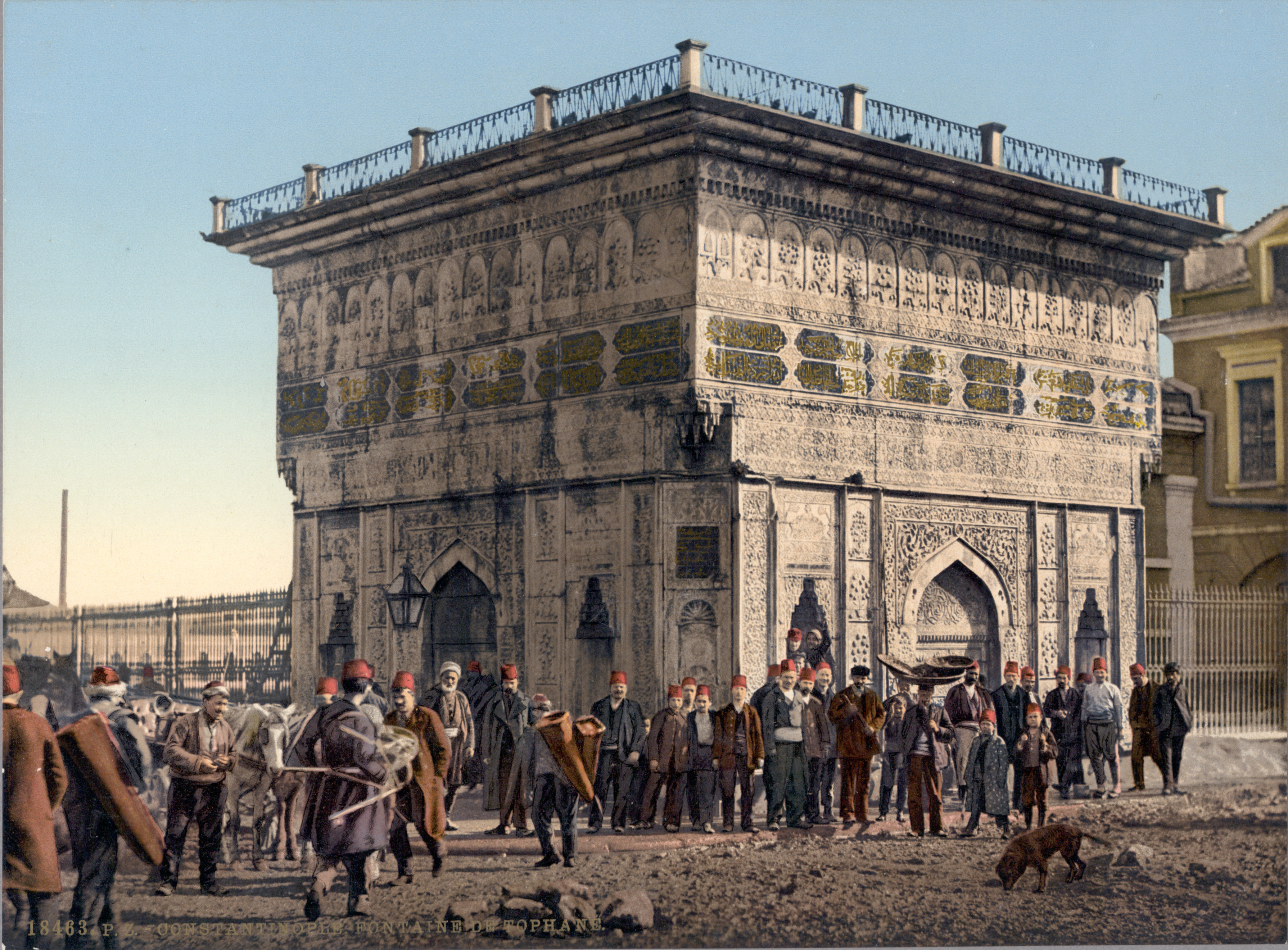|
Tophane Fountain
Tophane Fountain ( tr, Tophane Çeşmesi) is an 18th-century public water fountain built by List of sultans of the Ottoman Empire, Ottoman sultan Mahmud I in the Ottoman architecture, Ottoman rococo architecture and situated in the square of Tophane neighborhood in Beyoğlu district of Istanbul, Turkey. History The Sebil (fountain), sebil, a public fountain to provide drinking water for travellers and running water for praying people's Wudu, ritual washing needs, was commissioned by Sultan Mahmud I (reigned 1730–1754). It was built in 1732, in an era with great importance attached to the construction of many fountains. It is situated in the square, which is formed by the intersection of Tophane İskelesi Street and Necatibey Street. The fountain neighbors to Kılıç Ali Paşa Complex in the southwest, Nusretiye Mosque in the northeast, the Tophane Workshops in the northwest and the Quay in the southeast. The fountain underwent two major restorations. The first one was realize ... [...More Info...] [...Related Items...] OR: [Wikipedia] [Google] [Baidu] |
Beyoğlu
Beyoğlu (, ota, بكاوغلی, script=Arab) is a district on the European side of İstanbul, Turkey, separated from the old city (historic peninsula of Constantinople) by the Golden Horn. It was known as the region of Pera (Πέρα, meaning "Beyond" in Greek language, Greek) surrounding the ancient coastal town Galata which faced Constantinople across the Horn. Beyoğlu continued to be named Pera during the Middle Ages and, in western languages, into the early 20th century. According to the prevailing theory, the Turkish name of Pera, ''Beyoğlu'', is a modification by folk etymology of the Republic of Venice, Venetian title of ''Bailo of Constantinople, Bailo'', whose mansion was the grandest structure in this quarter. The informal Turkish-language title ''Bey Oğlu'' (literally ''Son of a Bey'') was originally used by the Ottoman Empire, Ottoman Turks to describe Lodovico Gritti, Istanbul-born son of Andrea Gritti, who was the Venetian Bailo of Constantinople during the ... [...More Info...] [...Related Items...] OR: [Wikipedia] [Google] [Baidu] |
Fountain Of Ahmed III
The Fountain of Sultan Ahmed III ( tr, III. Ahmet Çeşmesi) is a fountain in a Turkish rococo structure in the great square in front of the Imperial Gate of Topkapı Palace in Istanbul, Turkey. It was built under Ottoman sultan Ahmed III in 1728, in the style of the Tulip period. It was a social centre and gathering place during the Ottoman period of Constantinople. History The fountain kiosk of Ahmed III is in the place of a Byzantine fountain known as Perayton. Another fountain, built during the Byzantine Empire stood on the site before this fountain. The architectural features of the exterior reflect a synthesis of traditional Ottoman and contemporary western styles. The fountain was depicted on the reverse of the Turkish 10 lira banknotes of 1947-1952. . Banknote Museum: 4. Emission Group - T ... [...More Info...] [...Related Items...] OR: [Wikipedia] [Google] [Baidu] |
Ottoman Architecture In Istanbul
Ottoman is the Turkish spelling of the Arabic masculine given name Uthman ( ar, عُثْمان, ‘uthmān). It may refer to: Governments and dynasties * Ottoman Caliphate, an Islamic caliphate from 1517 to 1924 * Ottoman Empire, in existence from 1299 to 1922 ** Ottoman dynasty, ruling family of the Ottoman Empire *** Osmanoğlu family, modern members of the family * Ottoman architecture Ethnicities and languages * Ottoman Armenians, the Armenian ethnic group in the Ottoman Empire * Ottoman Greeks, the Greek ethnic group in the Ottoman Empire * Ottoman Serbs, the Serbian ethnic group in the Ottoman Empire * Ottoman Turks, the Turkic ethnic group in the Ottoman Empire ** Ottoman Turkish alphabet ** Ottoman Turkish language, the variety of the Turkish language that was used in the Ottoman Empire Products * Ottoman bed, a type of storage bed * Ottoman (furniture), padded stool or footstool * Ottoman (textile), fabric with a pronounced ribbed or corded effect, often made of silk or ... [...More Info...] [...Related Items...] OR: [Wikipedia] [Google] [Baidu] |
Fountains In Istanbul
A fountain, from the Latin "fons" (genitive "fontis"), meaning source or spring, is a decorative reservoir used for discharging water. It is also a structure that jets water into the air for a decorative or dramatic effect. Fountains were originally purely functional, connected to springs or aqueducts and used to provide drinking water and water for bathing and washing to the residents of cities, towns and villages. Until the late 19th century most fountains operated by gravity, and needed a source of water higher than the fountain, such as a reservoir or aqueduct, to make the water flow or jet into the air. In addition to providing drinking water, fountains were used for decoration and to celebrate their builders. Roman fountains were decorated with bronze or stone masks of animals or heroes. In the Middle Ages, Moorish and Muslim garden designers used fountains to create miniature versions of the gardens of paradise. King Louis XIV of France used fountains in the Gardens of ... [...More Info...] [...Related Items...] OR: [Wikipedia] [Google] [Baidu] |


.jpg)
